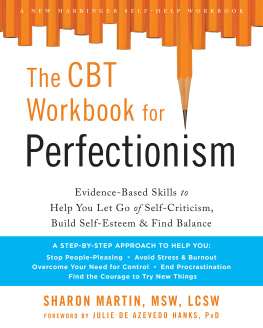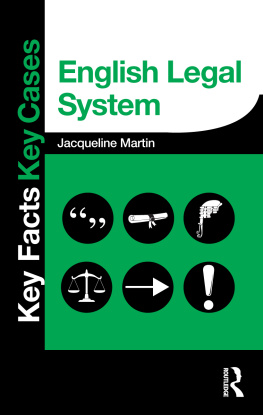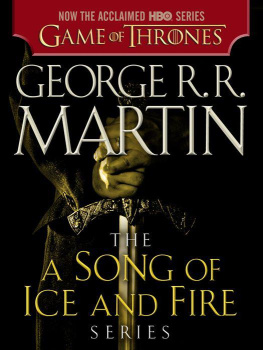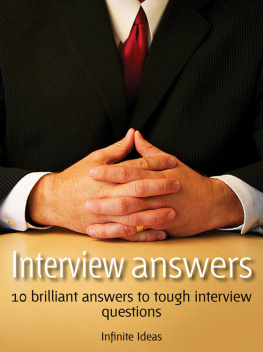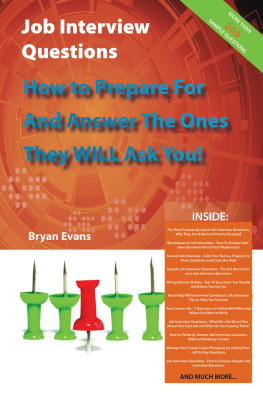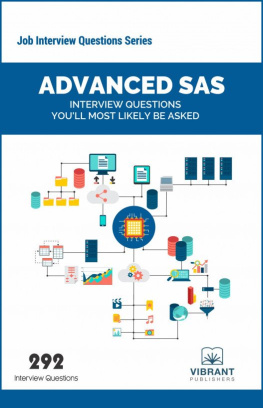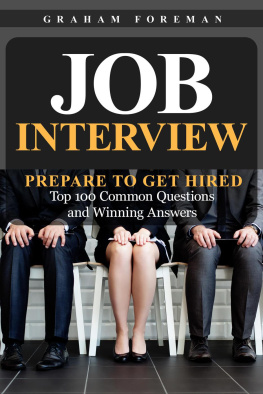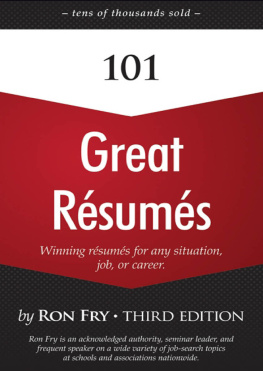Copyright 2014 by Carole Martin. All rights reserved. Except as permitted under the United States Copyright Act of 1976, no part of this publication may be reproduced or distributed in any form or by any means, or stored in a database or retrieval system, without the prior written permission of the publisher.
ISBN: 978-0-07-181801-8
MHID: 0-07-181801-4
The material in this eBook also appears in the print version of this title: ISBN: 978-0-07-181800-1, MHID: 0-07-181800-6.
eBook conversion by codeMantra
Version 1.0
All trademarks are trademarks of their respective owners. Rather than put a trademark symbol after every occurrence of a trademarked name, we use names in an editorial fashion only, and to the benefit of the trademark owner, with no intention of infringement of the trademark. Where such designations appear in this book, they have been printed with initial caps.
McGraw-Hill Education eBooks are available at special quantity discounts to use as premiums and sales promotions, or for use in corporate training programs. To contact a representative please visit the Contact Us page at www.mhprofessional.com.
TERMS OF USE
This is a copyrighted work and McGraw-Hill Education and its licensors reserve all rights in and to the work. Use of this work is subject to these terms. Except as permitted under the Copyright Act of 1976 and the right to store and retrieve one copy of the work, you may not decompile, disassemble, reverse engineer, reproduce, modify, create derivative works based upon, transmit, distribute, disseminate, sell, publish or sublicense the work or any part of it without McGraw-Hill Educations prior consent. You may use the work for your own noncommercial and personal use; any other use of the work is strictly prohibited. Your right to use the work may be terminated if you fail to comply with these terms.
THE WORK IS PROVIDED AS IS. McGRAW-HILL EDUCATION AND ITS LICENSORS MAKE NO GUARANTEES OR WARRANTIES AS TO THE ACCURACY, ADEQUACY OR COMPLETENESS OF OR RESULTS TO BE OBTAINED FROM USING THE WORK, INCLUDING ANY INFORMATION THAT CAN BE ACCESSED THROUGH THE WORK VIA HYPERLINK OR OTHERWISE, AND EXPRESSLY DISCLAIM ANY WARRANTY, EXPRESS OR IMPLIED, INCLUDING BUT NOT LIMITED TO IMPLIED WARRANTIES OF MERCHANTABILITY OR FITNESS FOR A PARTICULAR PURPOSE. McGraw-Hill Education and its licensors do not warrant or guarantee that the functions contained in the work will meet your requirements or that its operation will be uninterrupted or error free. Neither McGraw-Hill Education nor its licensors shall be liable to you or anyone else for any inaccuracy, error or omission, regardless of cause, in the work or for any damages resulting therefrom. McGraw-Hill Education has no responsibility for the content of any information accessed through the work. Under no circumstances shall McGraw-Hill Education and/or its licensors be liable for any indirect, incidental, special, punitive, consequential or similar damages that result from the use of or inability to use the work, even if any of them has been advised of the possibility of such damages. This limitation of liability shall apply to any claim or cause whatsoever whether such claim or cause arises in contract, tort or otherwise.
To Marvas in Marvelousthe best!
To my clients, who continue to keep me on my toes. Thanks for being my best source of learning.
Contents
Acknowledgments
Many thanks to the great staff at McGraw-Hill for producing wonderful books from my writing. Special thanks to my shepherd, Casie Vogel, who was with me from the start to the completion of this book. I very much appreciate your faith in me.
Introduction
Youve been preparing for your interviews. Youve been reading books about interview questions and answers and youve been practicingyoure still not getting the results you want. Whats not working for you? Why arent you getting invited back for a second interview? Why havent you received a job offer? What can you do to improve your chances in this competitive job market?
There may not be simple answers to those questions, but one thing is for sure: if you continue doing the same thing over and over and continue to get the same results, nothing is going to change. (Albert Einstein described this repetitious pattern of behavior as the definition of insanity.)
If you want different results to happen, something has to change. This would be a good time to start thinking out of the box and change the way youve been preparing for your interviews. If you are willing to let go of what youve been doing, and are now willing to try something new, this is the book for you.
The purpose of this book is to demonstrate a new technique; a technique that teaches you how to think beyond the questions and answers as the only way to prepare for an interview. By learning to read between the lines, this book will show you how to think like an interviewer thinks. You can stop worrying about the questions being asked, and start thinking about the concerns behind the questions.
Using this book to prepare for your interviews will introduce you to a new approach and way to think about the interview. Up until now, the preparation has focused on the questions that may or may not be asked by an interviewer. In this book, I will introduce you to a new method of preparation. Using the methodology that I have been using with thousands of clients over the past 15 years, I will share the tools and techniques that have successfully worked for others. The technique is to focus on the key factors of the job as the basis for the interview preparation so that you can answer any question the interviewer asks.
Fear of Questions
In an informal survey, some colleagues found that most candidates have one fear in common about the job interview: the fear that they will not have the answers to the questions that could be asked. Most candidates continue to think of the interview as a test with right or wrong answers. There are no right or wrong answers, but some answers are definitely stronger and some weaker than others; some are downright killers.
The method used in this book is to focus on the factors of the job rather than on the questions and answers. By identifying the key factors, and what is behind the interviewers questions, you will have a better idea of what the interviewer is looking for in a candidate. For example, if interviewers ask you, What are your goals? are they interested in your goals or are they asking how long you are going to stick around? They are probably interested in the latter. They will be listening during the interview to hear why you are interviewing for this particular job. Are you looking for this job as a quick fix? Or, are you really interested in what this particular company does and in the companys mission statement?
By reading between the lines of what the interviewer is asking, you will be able to give him or her an answer to the question that is really being asked. Begin to think, What is really behind the question being asked? What does the interviewer really want to know about me? There is more than likely always another reason that the question is being askedthe hidden meaning behind the question.
A Change in Thinking Equals a New View
The first step on the way to change is to visit a bookstore. The bookstore can be online or an actual store. If you search under the category of Career Books, you will find a wide variety of books on the subject of job interviews. Many of these books deal with questions and answers:


